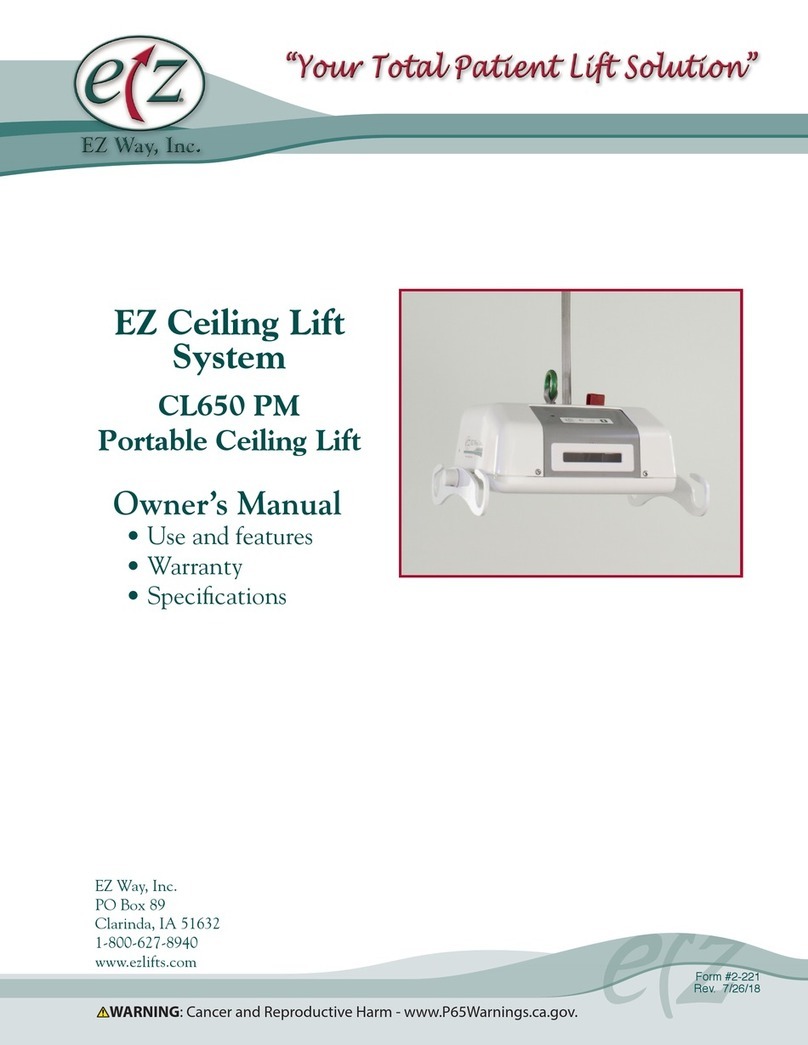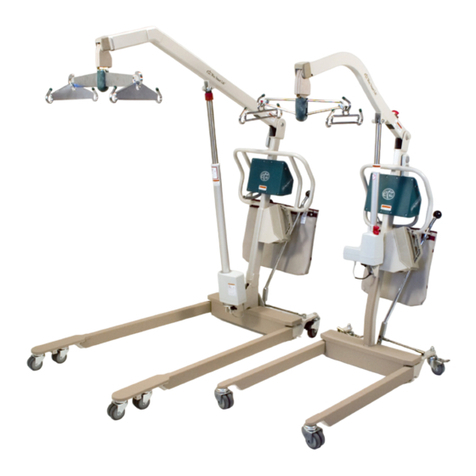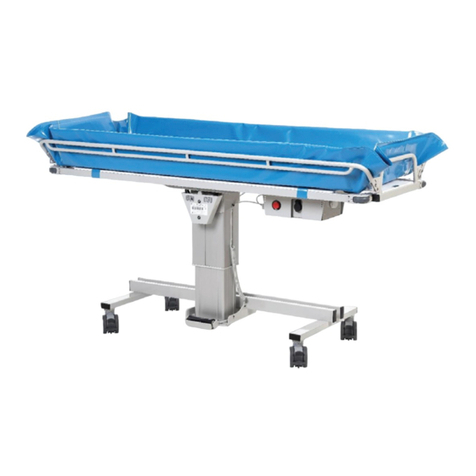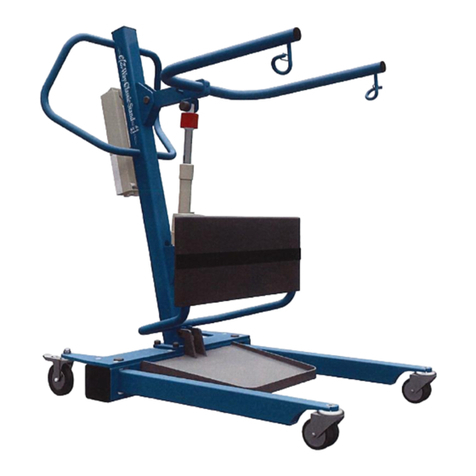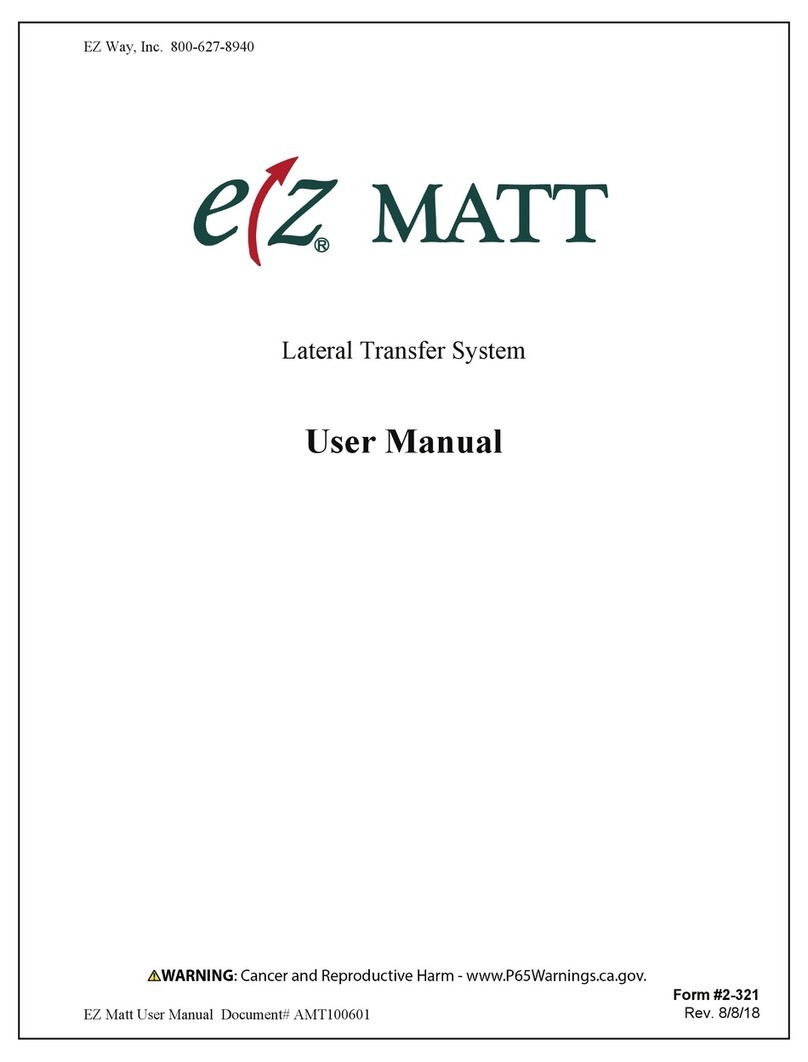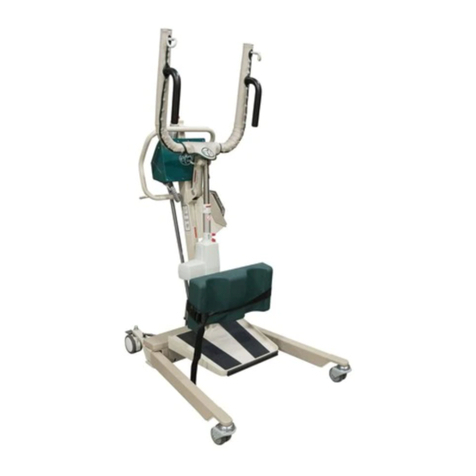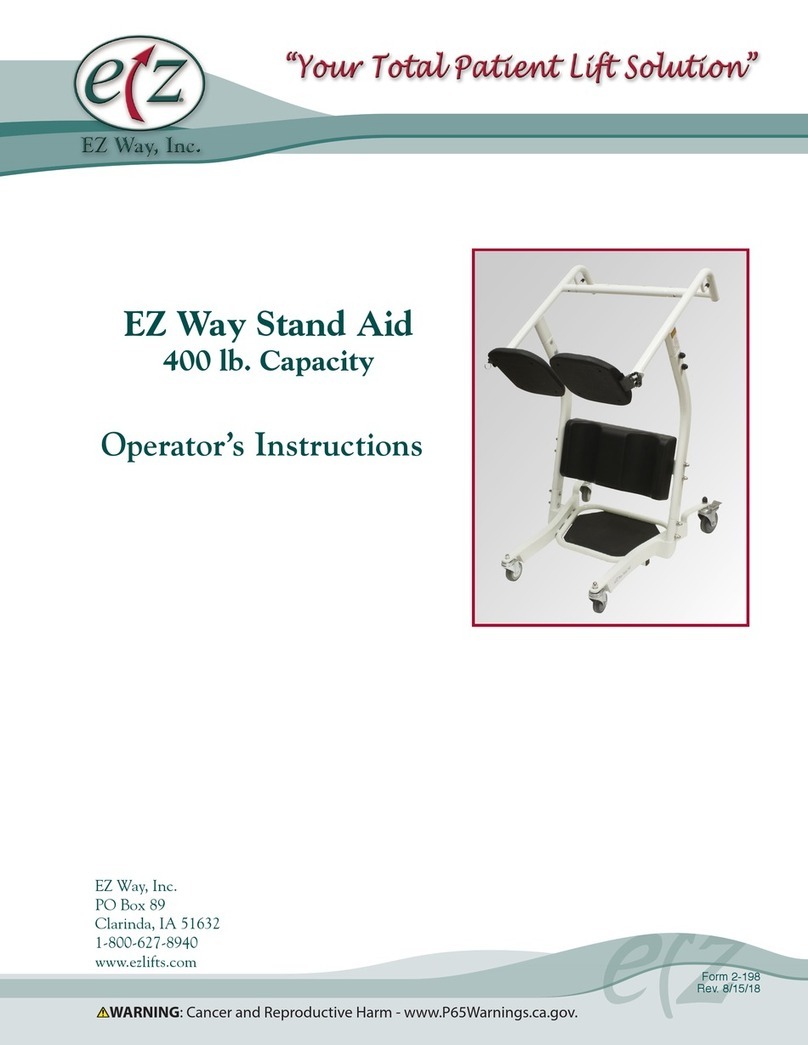
5) Drape the shoulder straps (A) over the patient’s
shoulders.
Attach sling - lying down
1) It is often helpful for a caregiver to be positioned
on both the passenger and driver’s sides of the
vehicle to assist in positioning of the sling and
aid in transfer. Prior to applying the sling, loosen
all straps as needed to accommodate the girth
of the patient. If the patient is in a backseat, slide
front seats to their forward-most positions in
order to provide additional work space.
2) Lean the patient on his/her side if possible to
position the sling behind the patient’s back with
the “pocket side” facing the seat and the padded
portion facing the patient. Pull one waist strap
(C) under the patient so the sling is under or
behind the patient with a waist strap (C) on
each side. Position the sling so the center waist
belts are aligned with the patient’s hips.
3) Position the center post of leg harness below the
navel of the patient. Slide both buckles located
on the waist belt straps (C) over the post (D).
Tighten the straps to a snug fit. The post (D)
should be positioned below the navel.
4) To affix the leg straps (E), lift the patient’s leg
and pull the leg strap (E) affixed to the center
post (D) under their leg, wrap the strap around
the outside of the upper-most part of the thigh,
thread the buckle through the ring (B) located
on the respective side of the padded sling, and
slide the buckle over the post (D). Repeat with
the other leg strap. Be sure the leg straps are
secured in the upper thigh area and not in the
knee area.
5) Drape the shoulder straps (A) over the patient’s
shoulders (Figure 6).
Removing patient from vehicle
Attach sling - seated position
1) It is often helpful for a caregiver to be positioned
on both the passenger and driver’s sides of the
vehicle to assist in positioning the sling and to
aid in transfer. Prior to applying the sling, loosen
all straps as needed to accommodate the girth
of the patient. If the patient is in a backseat,
slide front seats to their forward-most positions in
order to provide additional work space.
NOTE: It is helpful to recline the patient’s seat, if
possible, prior to lifting. Also, the shoulder straps
should be slightly slack so that the patient will be in
a more reclined position when exiting the vehicle.
This will allow the patient’s head to more easily
clear the door frame of the vehicle.
2) Lean the patient forward and position the padded
sling behind the patient with the “pocket side”
facing the seat and the padded portion facing
the patient. Position the sling so the center
waist belt (C - Sling Diagram, Figure 1) is
aligned with the patient’s hips, or is as close to
the hip region as possible (Figure 5).
3) Position center post of leg harness below the
navel of the patient. Slide both buckles located
on the waist belt straps (C) over the post (D).
Tighten the straps to a snug fit. The post (D)
should be positioned below the patient’s navel.
4) To affix the leg straps (E), lift the patient’s leg
and pull the leg strap (E) affixed to the center
post under their leg, wrap the strap around the
outside of the upper-most part of the thigh,
thread each strap through the respective ring (B)
at the side of the padded sling, and slide the
buckle over the post (D). Repeat with the other
leg strap. Be sure the leg straps are secured in the
upper thigh area and not in the knee area, and
there is not any slack in the straps secured around
the patient’s legs.
5
Figure 6 - Drape shoulder straps over patient’s
shoulders
Figure 5 - Align waist belt with patient’s hips






